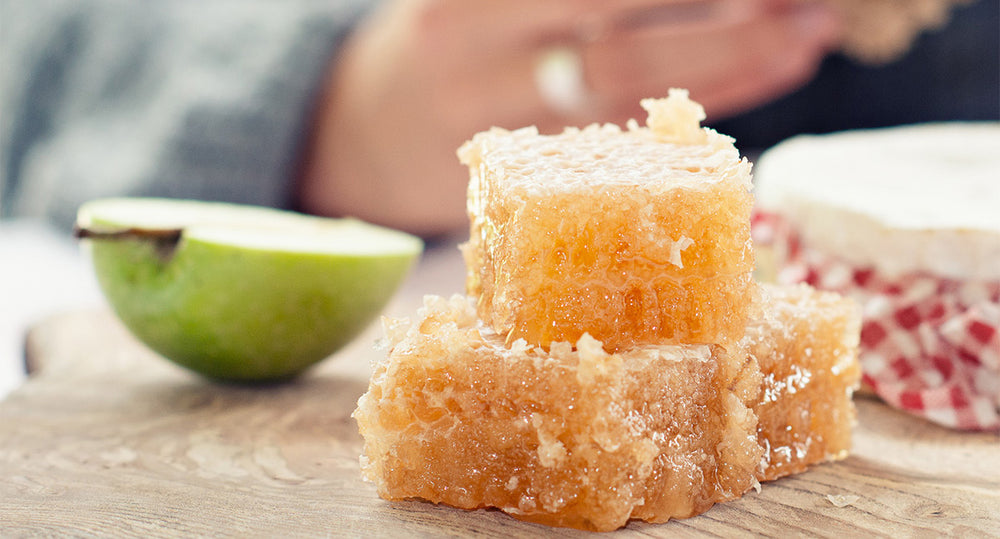Respecting the Bees that Produce Our Honey
How did No Mow May go for you? Did you manage to hold off cutting your lawn for the month? The mix of sunshine and rain certainly made things grow, didn’t it! Perhaps you left a small area uncut, while keeping the rest of the lawn neat.
The purpose of No Mow May, where we’re encouraged to avoid mowing the lawn for the month of May to allow the daffodils, daisies, buttercups and poppies to grow wild, is to provide nectar and pollen for bees and other pollinating insects before the summer takes hold, with its buffet of irresistible flowering plants.
Why We Need to Protect the Bees
But summer flowering plants aren’t enough. According to the organisers Plantlife, around 97% of flower-rich meadows have been lost since the 1930s, and that means 97% of food and habitats required for meadow-dwelling and foraging wildlife, including bees, has also been lost. Add to that the use of pesticides, in particular, neonicotinoids, that are toxic to pollinators and disease, it’s clear, bees are having their own kind of cost of living crisis.
For millennia, human beings have eaten honey, not just for its deliciously sweet, floral flavour, but for its incredible healing properties. Unlike other animals involved in agriculture, bees aren’t typically intensively farmed. Instead, their hard work is mostly supported by passionate individual beekeepers and smallholdings. Beekeeping is hard work. But the work of the bees is even harder. Foraging, looking after the health of the hives and the queen, producing honey – it’s exhausting, especially when you’re only a few centimetres long!
So how can we respect bees more?
How to be Bee Friendly
Here’s the Necta & Hive guide to protecting and nurturing the bees in your local outdoor areas and beyond…
· Plant bee-friendly plants – whether you have a large garden, a small backyard, a balcony or a window box, you can still draw bees to your outside space. Friends of the Earth have a fantastic guide to bee friendly plants for every space and every season. And you can even donate towards a Bee Saver Kit full of handy information and a pouch of wildflower seeds.
· Take part in No Mow May, reduce the number of cuts you give your lawn or reserve a corner of your garden to grow wild.
· Avoid using chemical pesticides and insecticides in your garden that are toxic to bees and research natural alternatives to manage pests such as soap and neem oil sprays.
· Support honey brands that respect natural habitats and the bees that produce their honey. (Wondering what brand of natural, healing, great tasting, luxurious, active honey to buy? Here’s a hint.)
· Create bee habitats for lone, hiveless bees, such as a wooden bee hotel, or create your own.
· Add a bee hydration station to your outside space – a shallow bowl filled with pebbles and fresh water makes a perfect stopover point for a thirsty bee en route to their hive or heading out for another round of foraging.
· Indulge in a bit of guerrilla gardening and scatter a handful of wildflower seeds over neglected open spaces or long-forgotten urban areas such as grass verges, overgrown carparks and even cracks in the pavement. Carry a bottle of water and give the area a drink every time you walk past and wait for them to bloom!
If all this talk of honey has left you with a sweet craving, order your active, healing Jarrah or Marri honey from Necta & Hive today!






